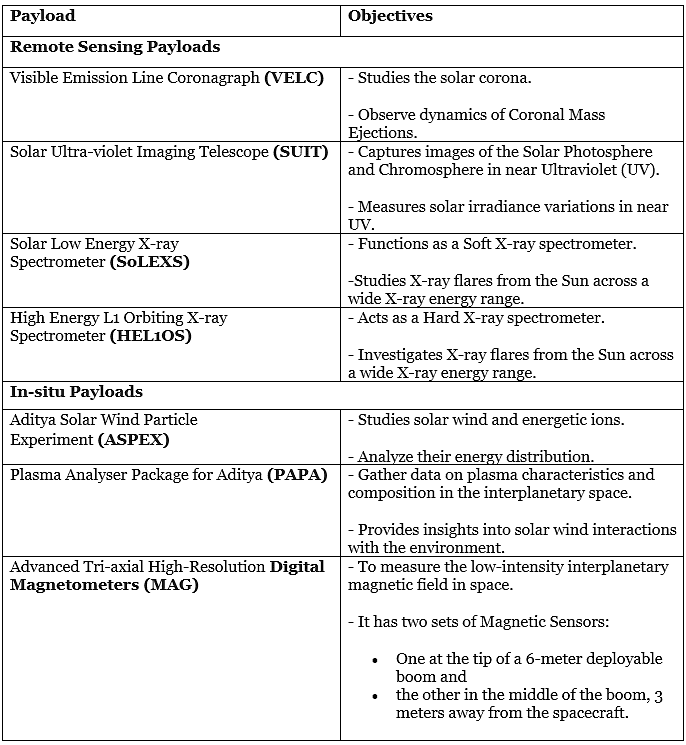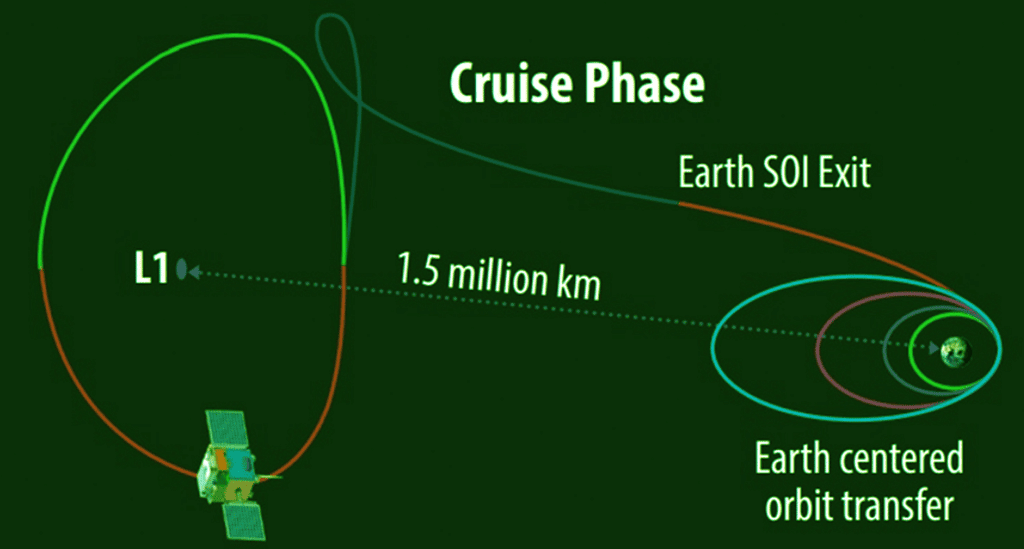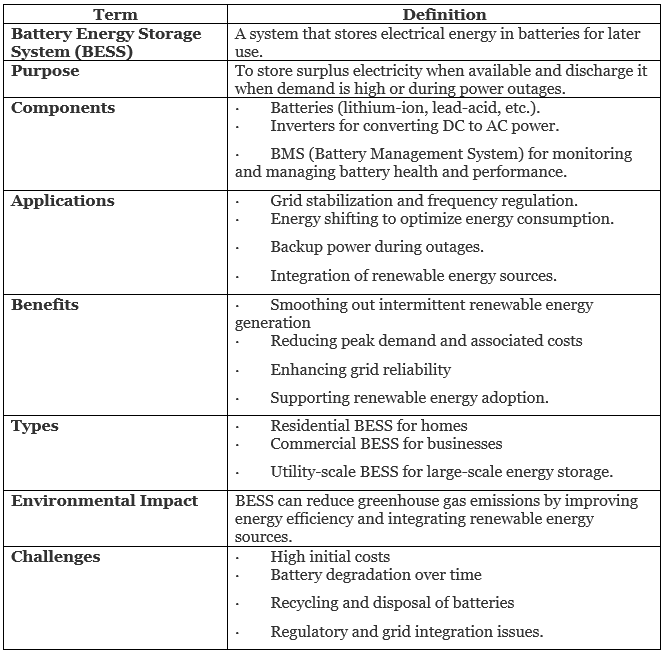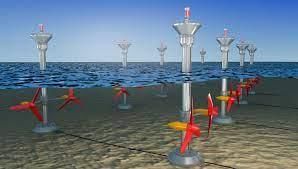Science & Technology - 3 | Current Affairs & Hindu Analysis: Daily, Weekly & Monthly - UPSC PDF Download
| Table of contents |

|
| Aditya-L1 |

|
| Tidal Energy |

|
| Battery Energy Storage System |

|
| Vanadium |

|
| Y- Chromosome |

|
Aditya-L1
Context:
Aditya-L1 represents India's inaugural space-based solar mission dedicated to studying the Sun. Launched on September 2, 2023, by the Indian Space Research Organisation (ISRO), it entered a halo orbit around the Sun-Earth Lagrange point 1 (L1). This orbit ensures an uninterrupted view of the Sun for extended durations, overcoming the limitations associated with Low Earth Orbits where the Earth often obstructs the view.
- The mission aims to enable India to establish its own space-based solar observatory, offering various practical applications in everyday life. Furthermore, the success of Aditya-L1 would elevate ISRO to the ranks of elite space organizations such as NASA and ESA.
Why the Necessity for a Solar Mission?
- The Sun, our closest star, resides approximately 150 million kilometers away and serves as the primary energy source for our solar system. Functioning as a blazing sphere of hydrogen and helium gases, the Sun's core, reaching temperatures of up to 15 million degrees Celsius, undergoes nuclear fusion, powering the entire star. The visible surface, or photosphere, maintains a relatively cooler temperature of about 5,500°C.
- While the Sun is the driving force behind Earth's systems, the potential disruptions caused by solar storms to our infrastructure cannot be ignored. Unresolved mysteries, including the extreme heat of the corona, the drivers of the solar cycle, the origins of solar wind, and phenomena like flares and Coronal Mass Ejections (CME), underscore the need for comprehensive understanding.
- Crucially, deciphering the Sun's intricate magnetic behavior is paramount for advancing space weather prediction, safeguarding technological assets, and unraveling the mysteries of stellar evolution. The Aditya-L1 mission symbolizes India's commitment to shedding light on these uncertainties related to our solar system's central star.
Capabilities and Objectives of the Aditya-L1 Mission
- Launched aboard a PSLV XL launch vehicle from the Satish Dhawan Space Centre in Sriharikota, the Aditya-L1 mission aims to establish a solar observatory in a halo orbit around the L1 Lagrangian point of the Sun-Earth system.
- Equipped with seven payloads, including visible and X-ray spectrometers, a coronagraph, analyzers for solar winds and energetic particles, as well as magnetometers, the mission possesses multi-wavelength observation capabilities. This suite of instruments will delve into various aspects of the Sun, including the corona, chromosphere, photosphere, flares, and coronal mass ejections.
Key Scientific Objectives of the Aditya L1 Mission
- Understanding the processes of coronal heating and solar wind acceleration.
- Investigating the initiation mechanisms of Coronal Mass Ejections (CME), solar flares, and near-Earth space weather.
- Exploring the coupling and dynamics of the solar atmosphere.
- Studying the distribution and temperature anisotropy of solar wind.

Uniqueness of the Aditya L1 Mission
- The information embedded in the anisotropy of the solar wind and fluctuations in the interplanetary magnetic field holds crucial insights into the origin of the solar wind and the turbulent cascade's evolution during the expansion of the solar wind.
- The mission is poised to make substantial strides in enhancing the capabilities of space weather prediction and refining forecasts for geomagnetic storms. Through the exploration of the mysteries within the corona, it will contribute significantly to deepening our comprehension of the Sun's impact on the solar system, planets, and beyond.
Lagrangian Points
Lagrange points are positions in space where the gravitational forces of two large orbiting bodies, like the Earth and Sun, produce regions of equilibrium where a smaller object can orbit while using minimal fuel.
- There are 5 Lagrange points, labelled L1 to L5. L1, L2, and L3 lie along the line connecting the two large masses.
- The L1 point of the Earth-Sun system provides an uninterrupted view of the Sun and is home to the SOHO space telescope.
- L2 is ideal for astronomy as spacecraft can communicate with Earth, harness solar power, and have a clear view of deep space
- The James Webb Space Telescope resides at the L2 point, using little fuel as the Earth and Sun's gravity balance out.
- L1, L2 and L3 points are unstable, with L3 being less useful due to its position behind the sun.
- L4 and L5 form the corners of equilateral triangles with the large masses at the other two corners. The L4 and L5 points are stable. Objects orbiting these two points are called Trojans, named after the three large asteroids (Agamemnon, Achilles and Hector) that are found here.
- The stability and unique gravitational forces make Lagrange points valuable positions for astronomy telescopes to get a clear view of space without being blocked by large bodies.
Lagrangian Point 1 and its Importance
Lagrangian Point 1 or L1 is one of the gravitationally stable points in space where the gravitational forces of two large bodies, like the Sun and Earth, balance out. Located about 1.5 million km from Earth towards the Sun, L1 provides an uninterrupted view of the Sun without any eclipses or occultations. Placing a solar observatory at L1 has major advantages:
- It can continuously monitor the Sun without any blocking of view. This allows tracking solar storms heading towards Earth from their origin on the Sun's surface.
- The satellite can be positioned to always look directly at the Sun, unlike probes in elliptical heliocentric orbits like Parker Solar Probe.
- Maintaining position at L1 requires relatively little fuel since the gravitational forces are balanced.
- L1 provides an early vantage point to observe coronal mass ejections and solar flares before they affect Earth. This increases lead time for space weather predictions.
- The Solar and Heliospheric Observatory (SOHO), an international solar observatory, is already located at L1, demonstrating its utility.
Aditya L1's Journey from Earth to the L1 Lagrange Point
The journey of Aditya-L1 from Earth to the L1 Lagrange point involves several crucial phases and manoeuvres. The journey can be divided into three phases:

Phase 1: Earth-Bound Orbits and Manoeuvres
- Aditya-L1 is launched and enters Earth-bound orbits for 16 days.
- During this phase, the spacecraft undergoes 5 manoeuvres to gain the necessary velocity for its journey.
- These manoeuvres are crucial for preparing Aditya-L1 for its trajectory towards the L1 Lagrange point.

Phase 2: Trans-Lagrangian Insertion and Trajectory (Cruise phase)
- After the Earth-bound orbits, Aditya-L1 undergoes a Trans-Lagrangian insertion manoeuvre.
- This marks the beginning of its 110-day trajectory towards the L1 Lagrange point.
- The spacecraft travels through space, following a trajectory that leads it to the L1 point.
- This phase involves continuous adjustments to ensure Aditya-L1 stays on the intended path.
Phase 3: L1 Orbit and Mission Operations
- Upon arrival at the L1 Lagrange point, Aditya-L1 performs a manoeuvre to bind itself to an orbit around L1 (halo orbit).
- L1 is a balanced gravitational location between the Earth and the Sun.
- The satellite spends its entire mission orbiting around L1 in an irregularly shaped orbit. The orbit is roughly perpendicular to the line joining the Earth and the Sun.
- During this phase, Aditya-L1 conducts its comprehensive study of the Sun, utilising its seven distinct payloads developed by ISRO and Indian academic institutes.
The Aditya-L1 mission holds significant importance in the realm of space science and technology for various reasons:
India’s Own Space-Based Solar Observatory:
- The mission builds upon ISRO's experience in space astronomy, showcasing advancements beyond Earth's orbit.
- It establishes India as a key player in space exploration, alongside NASA, ESA, and China's CNSA.
Expansion of India’s Space Technology Expertise:
- Real-time monitoring of the Sun enhances space weather prediction capabilities, crucial for safeguarding satellite systems and power grids.
- The mission demonstrates India's proficiency in deep space travel and spacecraft and instrumentation development for cutting-edge space science.
Diversification of ISRO’s Space Technology:
- Aditya-L1 expands ISRO's expertise into solar physics, beyond traditional areas like remote sensing and communication.
Future Solar Exploration:
- Positions India as a major spacefaring nation with capabilities spanning satellite applications to interplanetary missions.
- Lays the foundation for India to become a global hub for solar system science.
- Opens avenues for studying the solar poles, unraveling mysteries of the Sun, and enhancing cosmic understanding.
- Aditya-L2 and Aditya-L3 missions are planned for highly elliptical orbits to further explore the Sun.
Challenges and Future Directions:
- Aditya-L1, while historic, has limitations regarding resources and the L1 point. Future missions may need to go beyond L1 for a comprehensive study.
- Suggests missions to the L5 point for studying Earth-directed CME events and assessing space weather more accurately.
- Emphasizes the importance of studying the Sun's polar regions despite technological challenges.
Solar Space Programs Worldwide:
- Highlights solar space programs of other countries, such as NASA's Parker Solar Probe and ESA's Solar Orbiter.
- Mentions the significance of these programs in understanding the Sun's behavior and its impact on the solar system.
- In summary, Aditya-L1 marks a breakthrough for India in solar studies and space-based astronomy, laying the foundation for future advancements in understanding our life-giving star and contributing to global space exploration efforts.
Tidal Energy
With a coastline stretching around 7,500 kilometers, India encounters notable tidal fluctuations, presenting a promising opportunity for tapping into tidal energy. Despite being at an initial stage of development, there have been endeavors to assess and harness its potential as a renewable energy source. The natural forces such as the sun, wind, waves, and tides can be effectively converted into usable energy, making tidal energy a viable component of India's renewable energy portfolio.
What is Tidal Energy?
- Tidal energy is produced by the gravitational interaction of the Earth, the sun, and the moon, which causes the tides to rise and fall naturally.
- Electricity can be generated using tidal waters by creating a reservoir or basin behind a barrage and channeling the water through turbines within the barrier. Tidal energy, a result of the ebb and flow of tides and seas, encompasses kinetic energy derived from the movement of water.
- A tidal generator is responsible for converting the energy of tidal flows into power, utilizing gravitational hydropower to drive a turbine with the motion of water. Tidal power, as a form of renewable energy, taps into the kinetic and potential energy of ocean tides to produce electricity.
How does Tidal Energy generate power?
Tidal movements result from gravitational interactions among the Earth, the Moon, and the Sun, causing fluctuations in water levels in oceans and seas. The harnessing of tidal energy involves capturing the water's motion during these tidal cycles.
To generate electricity from oceanic tides, floodgate dams are constructed across sea or ocean inlets. Here's how the process works:
Water Capture and Storage:
- During high tide, water enters the inlet and is confined when the gate is closed.
- The retained water behind the floodgate is directed back to the sea.
Electricity Generation:
- As the tide recedes outside the floodgate, the trapped water is channeled through turbines to generate electricity.
Methods of Harnessing Tidal Energy:
Tidal Stream Generator:
- Similar to wind turbines, tidal stream generators use the kinetic energy of moving water to drive turbines.
- Positioned on the seabed in areas with strong tidal currents, these turbines rotate as tides flow, generating electricity.
- Installation options include tidal channels, straits, estuaries, and integration into existing structures.
Tidal Barrage:
- Tidal range systems, such as tidal barrages, exploit the potential energy difference between high and low tides.
- Tidal barrages are large dams or barriers erected at estuary or bay entrances, equipped with sluice gates and turbines.
- The flow of water through the barrage is controlled, allowing water to enter during high tide and release during low tide for electricity generation.
- Potential energy from tidal height variations is captured, stored, and converted into electrical power through turbines and generators.
In summary, tidal energy harnessing involves both tidal stream generators, utilizing kinetic energy, and tidal barrages, capitalizing on potential energy differences. These methods contribute to sustainable electricity generation by tapping into the rhythmic patterns of oceanic tides.
Tidal Lagoon
Tidal lagoons are similar to barrages but are constructed within a bay, creating an enclosed area with a tidal range.
- A modern tidal energy design idea is to build circular retaining walls outfitted with turbines that can catch the potential energy of tides.
- The reservoirs built are similar to tidal barrages, but the area is artificial and there is no pre-existing ecology.
Advantages of Tidal Energy
- Tidal energy is a renewable resource, as tides are caused by the gravitational forces of the Moon and the Sun, which are predictable and consistent.
- As technology progresses, tidal energy will become more economical and efficient.
- These systems typically have lower environmental impacts compared to fossil fuel-based power generation. They do not produce greenhouse gas emissions or air pollutants.
- It defends against coastal floods because of its stability under varied design situations.
- Tidal lagoons can absorb storm surges and waves once every 500 years.
- Tidal power equipment and infrastructure have a significantly longer lifespan and are less expensive than other renewable technologies.
Limitations
- The construction of tidal power facilities is now more expensive, because of the significant capital needs.
- Tidal barrages can impact local ecosystems by altering water flow and sediment distribution. They can also affect fish migration patterns.
- The main environmental issues are the impacts of blades on fish seeking to enter the lagoon, auditory output from turbines, changes in sedimentation processes, and habitat alteration.
- Maintenance and repair of equipment can be complex.
- Energy demand is restricted. Powerful tides only occur on average for 10 hours per day, tidal energy storage capacity must be built.
- It is challenging to offer tidal energy to coastal areas since the energy of the tides is typically a long distance from where the electricity would be needed inland.
Tidal Energy Potential in India
India’s coastline has several locations with strong tidal currents and significant tidal ranges, particularly in the Gulf of Cambay (Khambhat) in Gujarat and the Gulf of Kutch. These areas have been identified as having the highest tidal energy potential in the country.
- The tidal cycle is caused by the moon’s gravitational influence and occurs every 12 hours.
- The difference in water height between low and high tide is referred to as “potential energy.”
- To capture enough power from the tidal energy potential, the high tide must be at least five meters (16 feet) higher than the low tide.
Only around 20 areas on the earth get such high tides. India is one of them. On the west coast of Gujarat, the Gulf of Cambay and the Gulf of Kutch have maximum tidal ranges of 11m and 8m, respectively, with average tidal ranges of 6.77m and 5.23m. Research and development activities related to tidal energy are ongoing in various institutions and organizations in India. These activities focus on turbine design, deployment strategies, environmental impact assessments, and resource assessments.
Government Initiatives
- India has engaged in collaborations with countries like France and the United Kingdom, aiming to exchange knowledge and expertise in tidal energy. These partnerships seek to expedite technological advancements and facilitate project implementation.
- In 2011, the Gujarat government entered into an agreement with Gujarat Power Corporation Limited (GPCL), Atlantis Resource Corporation (UK), and Power Monitoring Expert Systems, Singapore, to establish a 250 MW tidal power plant in the Gulf of Kutch. The initial phase of a 50 MW tidal power plant in Mandavi, Kutch, is already underway.
- However, a 3.75 MW tidal power plant project in Durgaduani Creek, Sunderbans, West Bengal, sanctioned by the Ministry of New and Renewable Energy (MNRE) in 2008, faced challenges and did not materialize.
Challenges:
- Despite 40 years of efforts in studying and harnessing tidal energy in India, legislative commissions are urging the government to reassess its potential. Recommendations include exploring realistically exploitable potential, conducting additional research, and initiating a tidal power pilot project.
- Construction on two tidal power facilities in West Bengal and Gujarat, with capacities of 3.75 and 50 megawatts, respectively, began in 2007 and 2011. However, both projects were halted due to high costs. The primary obstacles include exorbitant prices and environmental concerns, requiring careful project development to minimize impacts on marine ecosystems and local communities.
Way Forward
- While tidal energy offers more potential than wave or offshore wind energy, limited suitable locations hinder its widespread adoption. Tidal stream energy extraction technology is in its early stages but holds significant potential as part of a region's future energy mix. Research on tidal barrages and other technologies aims to enhance understanding and utilization of ocean energy.
- Despite tidal energy not yet being a widely adopted commercial source, it has the potential to contribute to renewable energy portfolios. The sector's expansion could stimulate economic growth, reduce carbon footprints, and create jobs, aligning with India's commitment to cut emission intensity by 33 to 35 percent by 2030 compared to 2005.
Battery Energy Storage System
Approval has been granted by the Indian government to provide viability gap funding (VGF) that will encompass up to 40% of the entire capital cost for the installation of a 4,000 MWh battery energy storage system (BESS) within the country.
About:
- In line with India's renewable energy objectives, this endeavor corresponds to the substantial expansion of solar and wind energy capacity in the country, accounting for 25% of its energy demand, inclusive of large hydro plants.
- The primary goal of the Battery Energy Storage System (BESS) is to facilitate the utilization of stored renewable energy during peak hours, fostering a continuous supply of renewable energy.
- This initiative reinforces India's commitment to attaining 50% of its energy needs from renewable and non-fossil sources by 2030, concurrently contributing to the reduction of carbon emissions.
About Battery Energy Storage Systems:

Vanadium
Vanadium, a crucial raw material with various industrial applications, has been recently discovered in sediment samples obtained from the Gulf of Khambhat in Gujarat.
Overview
Vanadium is a chemical element denoted by the symbol "V" and holds the atomic number 23. This metallic element boasts a silver-gray hue, ductile properties, and malleability. Known for its hardness surpassing that of most metals, vanadium exhibits excellent corrosion resistance against both alkalis and acids.
Historical Insights:
- Discovered in 1801 by Spanish mineralogist Andrés Manuel del Río, initially named erythronium, vanadium faced rediscovery in 1830 by Swedish chemist Nils Gabriel Sefström. Sefström named it after Vanadis, the Scandinavian goddess of beauty and youth. Henry Enfield Roscoe, an English chemist, isolated the metal in 1867 through the hydrogen reduction of vanadium dichloride.
Occurrence:
- Abundantly found in Earth's crust, vanadium occurs in various minerals, coal, and petroleum. Ranking as the 22nd most prevalent element, it exists in over 60 different minerals, with major resources concentrated in South Africa and Russia.
Leading Producers:
China, South Africa, and Russia emerge as the primary producers of vanadium.
Applications:
Alloys:
- A key application is as an alloying element, enhancing the strength and toughness of steel and other metals.
- Vanadium steel, renowned for its strength, toughness, and high-temperature hardness retention, finds uses in tools, cutlery, and structural materials.
Vanadium Flow Batteries (VFBs):
- In VFBs, vanadium plays a pivotal role in creating a reliable, safe, and stable solution for renewable energy storage.
Chemical Catalysts:
- Vanadium compounds serve as catalysts in various chemical reactions, including the production of sulfuric acid.
Nuclear Applications:
- Utilized in some nuclear reactors, vanadium acts as a structural material and neutron moderator.
Medical Applications:
- In the medical field, vanadium is employed for treating ailments such as diabetes, heart disease, and high cholesterol.
Key Facts about Gulf of Khambhat
- It is an inlet of the Arabian Sea along the west coast of India, in the state of Gujarat.
- Earlier, it was known as the Gulf of Cambay.
- Stretching for about 80 miles, it divides the Kathiawar Peninsula from the south-eastern part of Gujarat.
- Rivers: The Narmada, Tapti, Mahi, and Sabarmati rivers drain into it.
- Geography:
- It is a relatively shallow and enclosed body of water, characterized by its tidal movements and extensive mudflats.
- It is known for having one of the highest tidal ranges in the world, with tides that can rise and fall dramatically.
- There are some coral reefs around small inlets in the western part of the Gulf.
Y- Chromosome
Recent research has unveiled that the Y chromosome houses genes associated with the regulation of ageing and lifespan.
Key Findings
- Scientists have identified essential genes on the Y chromosome linked to biological functions, including those influencing ageing and lifespan regulation.
- The genome sequences of Neanderthals, ancient relatives of modern humans, exhibit distinct indicators of the Y chromosome replacement initiated by modern humans.
- There is a possibility that the Y chromosome might lose its designation as the "master of maleness" to another chromosome in the future.
Chromosome Definition
- A chromosome is a slender, thread-like structure situated within the nucleus of animal and plant cells.
- Comprising protein and a single DNA molecule, each chromosome is passed from parents to offspring. DNA carries specific instructions that render each living creature unique.
- Humans possess 22 pairs of chromosomes, including sex chromosomes X and Y. While biological males have one X and one Y chromosome, biological females carry two X chromosomes.
- The Y chromosome, recognized as the "master of maleness," dictates biological male sex and harbors genes involved in sex determination.
|
38 videos|5293 docs|1118 tests
|
FAQs on Science & Technology - 3 - Current Affairs & Hindu Analysis: Daily, Weekly & Monthly - UPSC
| 1. What is tidal energy? |  |
| 2. How does a battery energy storage system work? |  |
| 3. What is vanadium and its significance in energy storage? |  |
| 4. What is the significance of the Y-chromosome in genetics? |  |
| 5. How is science and technology related to the article topic? |  |























